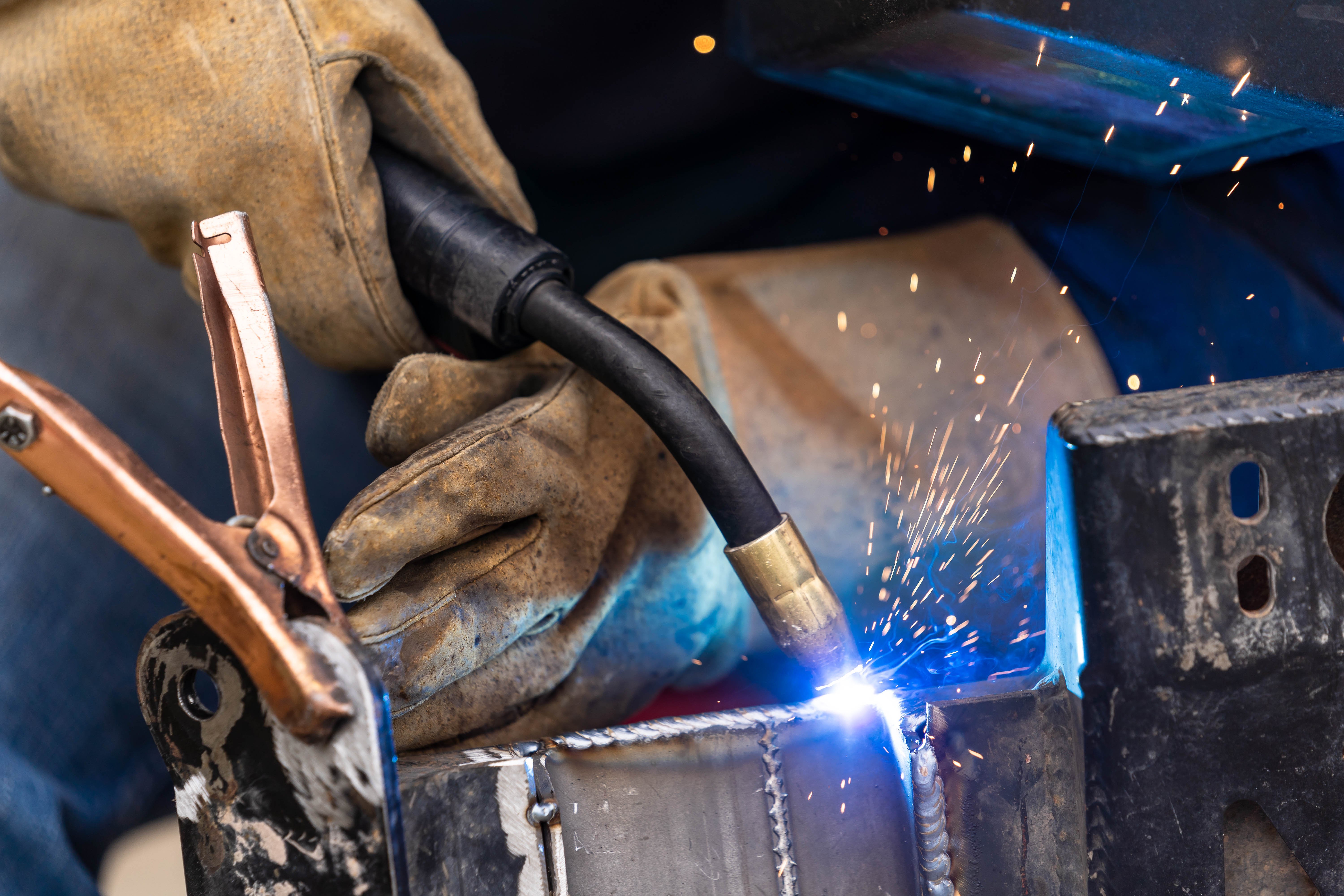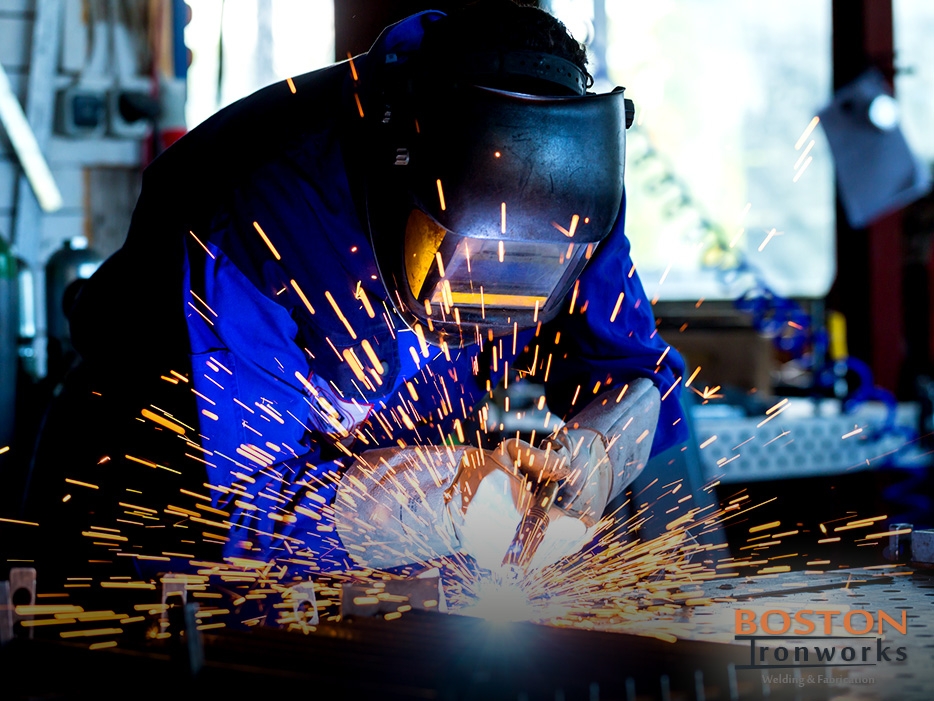All Regarding Welding: Key Insights Into Techniques and Ideal Practices for Success
Welding includes a variety of strategies, each fit for particular products and applications. Recognizing these methods, such as GMAW, SMAW, and TIG, is essential for achieving suitable outcomes. Furthermore, the ideal tools and security practices can not be overlooked. As prep work and repairing play crucial duties in the welding procedure, understanding these components can considerably improve the high quality of the final product. What are the key variables that ensure an effective weld?
Recognizing Various Welding Techniques
Welding methods include a selection of methods, each suited to specific applications and products. Among the most typical methods are Gas Metal Arc Welding (GMAW), Protected Metal Arc Welding (SMAW), and Tungsten Inert Gas Welding (TIG) GMAW, additionally called MIG welding, is popular for its speed and adaptability, making it perfect for slim materials. SMAW, or stick welding, is preferred for its simplicity and performance in outdoor settings, specifically with thicker metals. TIG welding provides precision and control, making it suitable for detailed job and non-ferrous metals (Fabrication). Each strategy has its distinct advantages and factors to consider, allowing welders to pick the very best technique based on the job's requirements, material type, and desired results. Understanding these strategies is crucial for effective welding
Crucial Welding Devices and Tools
While various welding strategies require details skills, the ideal tools and devices are equally important for achieving top quality outcomes. Vital welding tools consists of welding devices, which vary depending upon the method-- such as MIG, TIG, or stick welding. Protective gear, including aprons, gloves, and safety helmets, guarantees safety and convenience throughout the process. Furthermore, fixtures and clamps aid safeguard materials in place, making certain accuracy in welds. Consumables like welding rods, wire, and shielding gas are additionally critical elements that affect the top quality of the weld. Devices such as cutters and grinders help with surface area prep work and post-weld ending up, contributing to an expert outcome. Spending in high-quality tools ultimately enhances the performance and performance of welding tasks.
Security Practices in Welding
Correct safety and security techniques are vital in the welding market to secure employees from prospective threats. Welders have to wear ideal personal safety equipment (PPE), consisting of safety helmets with correct shading, handwear covers, and flame-resistant apparel. Appropriate air flow is important to decrease exposure to harmful fumes and gases generated during the welding process. In addition, workers should be learnt the proper handling of welding devices to stop crashes. Fire precaution, such as maintaining flammable products far from the welding area and having fire extinguishers easily available, are required. Normal examinations of devices and workspaces can aid determine possible risks before they bring about accidents. By sticking to these security methods, welders can produce a more secure working environment and minimize threats linked with their trade.
Preparing Materials for Welding
Preparing products for welding is a vital action that considerably affects the quality and integrity of the last item (Montana Mobile Welding and Repair Belgrade). Correct preparation entails cleaning up the surfaces to remove impurities such as oil, rust, and dirt, which can compromise the weld. Strategies such as grinding, fining sand, or utilizing solvents are generally used to attain a clean surface area. Additionally, making certain that the products mesh well is vital; voids can cause weak welds. It's additionally crucial to consider the positioning and positioning of the elements, as this will certainly influence the ease of welding and the last end result. Choosing the ideal filler product and guaranteeing compatibility with the base steels is vital for attaining strong, durable welds.
Tips for Getting High-Quality Welds
Accomplishing premium welds needs attention to information and adherence to finest practices throughout the welding process. Appropriate joint preparation is crucial, making sure surface areas are tidy and complimentary from pollutants. Picking the suitable filler product and welding technique based on the base steels is crucial for excellent bonding. Preserving constant traveling speed and angle while welding can stop problems and promote uniformity. In addition, controlling heat input is necessary; extreme heat can lead to bending and weakened joints. If necessary, regularly examining the welds throughout the procedure enables for immediate changes. Employing proper post-weld treatments, such as cleaning and tension relief, can boost the resilience and stability of the weld, ultimately ensuring an effective outcome.
Fixing Typical Welding Issues
Welding typically provides challenges that can impact the quality and stability of the end product. Usual concerns such as porosity, irregular weld beads, and getting too hot can arise, each requiring details troubleshooting methods. Understanding these troubles is essential for welders to improve their skills and achieve excellent results.
Porosity Issues Clarified
Although porosity can commonly be neglected, it remains a vital problem in welding that can compromise the honesty of an ended up product. Porosity describes the existence of tiny gas pockets within the weld grain, which can compromise the joint and lead to premature failure. This issue generally occurs from contaminants, moisture, or improper securing gas insurance coverage throughout the welding procedure. To alleviate porosity, welders must verify that the base materials are clean and completely dry, make use of proper shielding gases, and preserve constant welding specifications. On a regular basis evaluating the tools and atmosphere can likewise help identify possible concerns before they manifest in the weld. Dealing with porosity effectively is crucial for achieving solid, resilient welds that satisfy high quality criteria.

Inconsistent Weld Beans
Inconsistent weld grains can significantly affect the quality and toughness of a finished item. Numerous factors add to this concern, including improper travel speed, wrong amperage setups, and inconsistent electrode angles. When the welder moves too swiftly, a bead click here to find out more might appear slim and lack penetration, while moving too slowly can create too much buildup. Additionally, utilizing the incorrect amperage can cause either damaging or extreme spatter, both of which concession weld stability. The welder's technique, such as inconsistent lantern activity, can also cause unequal grain appearance. To minimize these problems, welders need to concentrate on preserving stable, controlled why not try here movements and ensuring proper equipment settings to accomplish harmony in their welds. Consistency is vital to achieving solid and reputable welds.
Getting Too Hot and Warping Issues
Extreme warm throughout the welding process can bring about significant getting too hot and contorting concerns, influencing the structural stability of the workpiece. These problems usually show up as distortion, which can endanger placement and fit-up, making additional setting up testing. Factors contributing to overheating include the choice of welding parameters, such as voltage and take a trip speed, as well as the sort of material being welded. To alleviate these issues, welders ought to maintain regular traveling rate and proper warmth input while checking the workpiece temperature level. In addition, pre-heating or post-weld warm treatment can assist ease anxieties brought on by fast cooling - Fabrication. Routine assessment and adherence to ideal techniques are crucial in avoiding getting too hot and ensuring the long life and integrity of bonded structures
Frequently Asked Concerns
What Are the Profession Opportunities in the Welding Sector?
The welding industry offers varied profession chances, including placements as welders, designers, educators, and assessors. Professionals can work in manufacturing, construction, aerospace, and auto industries, profiting from solid need and competitive incomes in numerous functions.
How Can I Enhance My Welding Rate Without Sacrificing Quality?
To boost welding rate without sacrificing top quality, one must practice reliable techniques, keep devices, optimize setups, and enhance hand-eye control. Normal training and looking for responses can additionally significantly add to attaining faster, top quality welds.
What Accreditations Are Offered for Welders?
Countless qualifications exist for welders, including those from the American Welding Culture (AWS), the National Facility for Construction Education And Learning and Study (NCCER), and different industry-specific companies. These credentials boost employability and demonstrate skill effectiveness.
How Does Welding Impact the Characteristics of Metals?
Welding influences the residential or commercial properties of steels by altering their microstructure, which can cause changes in firmness, ductility, and strength. Warmth input and air conditioning prices during Learn More Here the process greatly affect these material characteristics.
Can I Weld Dissimilar Metals Together?

Comments on “Avoid welding failures with these tips from Montana Mobile Welding and Repair Belgrade Fabrication”